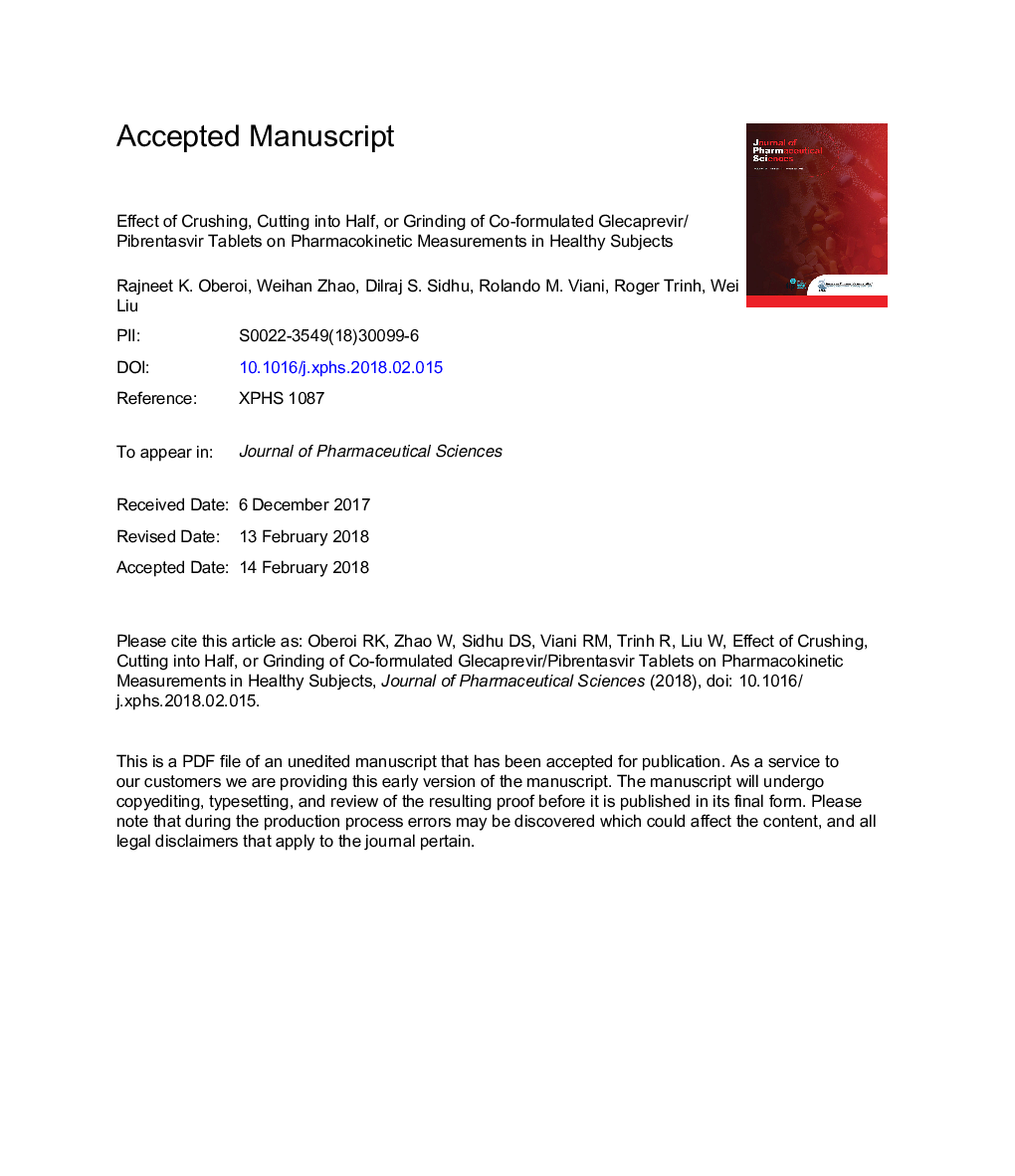| Article ID | Journal | Published Year | Pages | File Type |
|---|---|---|---|---|
| 8513311 | Journal of Pharmaceutical Sciences | 2018 | 24 Pages |
Abstract
Glecaprevir (GLE) and pibrentasvir (PIB) are direct-acting antivirals coformulated as a combination tablet for once-daily treatment of chronic hepatitis C virus infection. The objective of this study was to evaluate the effect of different methods of tablet manipulations-cutting in half, grinding into powder, or crushing-on the bioavailability of GLE and PIB relative to whole film-coated bilayer tablets. This was a phase 1, single-dose, open-label, randomized, 5-period, nonfasting crossover study in 25 healthy adult male and female subjects. Intensive pharmacokinetic measurements were carried out up to 48 h after dosing on day 1 of each period. Safety and tolerability was assessed throughout the study. Compared with the reference whole tablets, cutting into half had minimal impact on GLE and PIB exposures (â¤15% difference), whereas grinding or crushing the tablets resulted in lower exposures (27% to 61%) for GLE and higher exposures (21% to 83%) for PIB. These results provide guidance on appropriate administration of GLE/PIB in patients who have difficulty swallowing whole tablets.
Keywords
GLEtime to CmaxDAACmaxPiBRBVtmaxAUCt1/2Direct-acting antiviralOral absorptionmaximum plasma concentrationRibavirinAnti-infectivesPharmacokineticsClinical pharmacokineticsBioavailabilityFormulationarea under the plasma concentration-time curveterminal elimination half-lifeHCVHepatitis C virusGenotype
Related Topics
Health Sciences
Pharmacology, Toxicology and Pharmaceutical Science
Drug Discovery
Authors
Rajneet K. Oberoi, Weihan Zhao, Dilraj S. Sidhu, Rolando M. Viani, Roger Trinh, Wei Liu,
